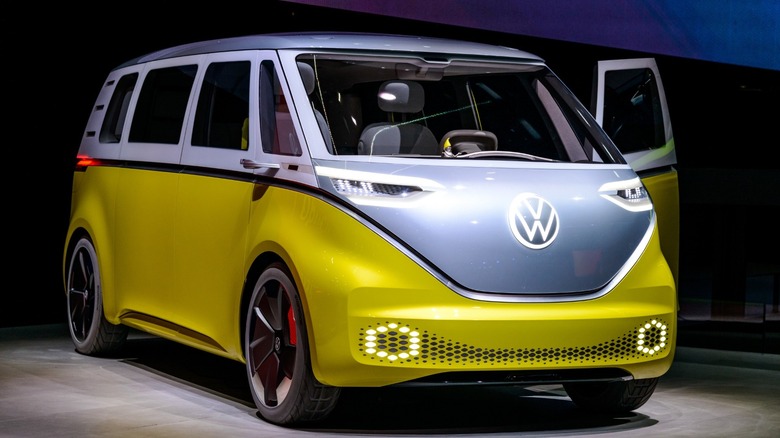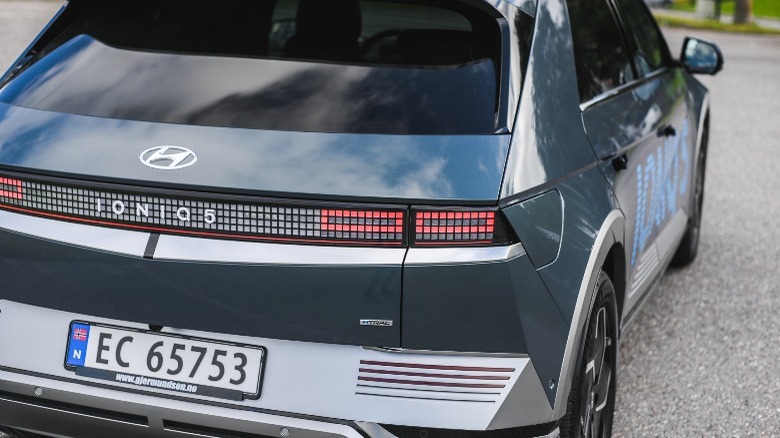There's An Actual Reason Why Cars Are Getting Weirder
If you've been paying attention at all to the vehicle market, you'll have noticed that weird and unusual cars are becoming a little more commonplace. It's a design trend that's especially jarring considering the bulbous, aerodynamic hellscape that was the early 2000s and 2010s. Automotive design seems to have done a full 180; moving away from amorphous, characterless, aerodynamic blobs, back to cars that once again have character. Whether you consider the retro-inspired Hyundai Ioniq 5, the bulky Hyundai Kona N, or the 2022 Land Rover Defender that looks like it was pulled straight off the set of a sci-fi movie, it's undeniable that there's a shift in vehicle design away from homogeneity.
The same can be said for features — new cars are chock-full of outlandish accessories and capabilities. One need only look at the likes of the Performance Electronic Parking Brake on the 2024 Ford Mustang that exists purely for drift play, or the N Grin Shift button in the Hyundai Kona N that gives you 20 seconds of overboost and downshifts, to become more playful.
Manufacturers are using design to stand out
If the more than 10 million subscribers on some popular automotive YouTube channels (via Social Blade) are anything to go by, part of this trend towards weird gimmicks and car designs can almost certainly be attributed to online attention on Instagram and TikTok. Social media opening a huge door for low-cost marketing has changed the landscape significantly, but there are also more tangible reasons for the standout designs. Between the maturation of the vehicle market and the popularization of EVs leading to the commoditization of basic luxury features, it's becoming more and more difficult for auto-makers to earn market share with features and performance alone.
A prime example of once-luxury features becoming mainstream is the projection that 90% of new light vehicles in the U.S. will be internet-connected by 2023, according to Statista. Without being able to lean on performance increases and useful, new features, vehicle manufacturers are turning to the design department for salvation. A study by the San Francisco State University in 2014 (via archive.org) found that vehicle purchasing decisions and brand loyalty were driven by design and esthetics, rather than other factors like safety, features, and gas mileage. The end result is that cars are generally becoming more feature-rich, while designs are diversifying, meaning there is more to choose from for consumers after a specific look.

